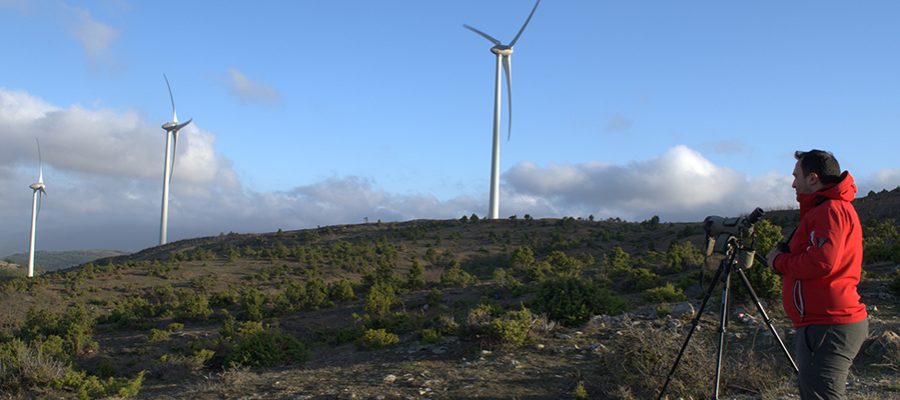
Cumulative impact study on the wind farms in Thrace.
Wind energy is one of the main technologies that can help reduce greenhouse gases and limit climate change. However, in order to avoid any disproportionate negative impacts for biodiversity, it is necessary to properly site wind farms with respect to existing ecosystems. When wind farms are placed in the flight paths of birds there is a significant mortality rate, as birds are in many cases unaware of the risk of collision.
This human-induced threat can be reduced if a proper initial prediction is done during the environmental licensing phase of a project. Fortunately for Thrace, iconic species such as vultures and the golden eagle have been studied for decades and the available data can contribute to drafting of reliable ecological and environmental impact studies.
Nevertheless, in Thrace we see licensed wind farms where the Environmental Impact Assessments on birds have been assessed as being low or medium impact, but in practice, they have a disproportionately negative impact on rare bird populations. What can be the reason for this? The problem arises because an assessment focuses on each wind farm in isolation, without taking into account the overall effect arising from the concentration of the total number of wind farms in the nearby areas. A wind farm, on its own, that might have a low impact on the biodiversity of an area can have a completely different result when combined with the overall effect due to the total number of wind farms already operating or planned in the wider area.
In practice and unfortunately, dating from the year 2000 to the present, the majority of wind turbines in the Evros and Rhodope mountain area, which total 276 in number, have been installed on neighbouring hills and create clusters of wind turbines. This number tends to increase because a significant part of Thrace has been designated as a Wind Priority Area in the Special Framework for Spatial Planning for the Development of Renewable Energy Sources and Land Management.
With the objective of putting a stop to this detrimental trend in the problematic siting of wind farms, the SPBT took an initiative to prepare for the first time a study to assess the cumulative effects of the wind farms of Thrace. The study examines the sustainability of rare bird populations, the impacts related to bird collisions and the displacement of bird populations, the impacts on bats and the impacts arising from changes to land use and habitat types. At the same time, evaluations are also being done both on the monitoring studies used to determine the effects of wind turbines and how the legal framework is applied in relation to the cumulative effects of the wind farms.
